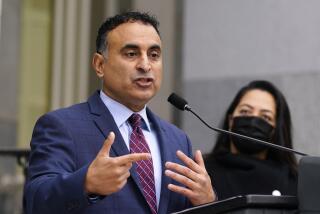Let Some Light Into the Prisons
Last year, the California Department of Corrections reversed its policy allowing reporters to have timely interviews with specific prisoners. Corrections officials maintained that media-savvy criminals doing “prime time instead of hard time” posed safety and operational problems. So they sharply curtailed reporters’ access and banned the use of cameras and tape recorders in documenting face-to-face prisoner interviews. Absurdly, they even barred pencils and paper.
The prison officials have failed to provide any evidence of concrete problems, and there are good reasons to think none exist. It’s time for state legislators to call the Corrections Department’s bluff by passing SB 434, a bill under Senate consideration that would restore media access.
While the department claims it’s snowed by time-consuming interview requests from tabloid journalists more interested in spinning sensational stories than in ferreting out truth, its officials acknowledged last year that they receive no more than six or seven requests for interviews yearly at each prison. That number is obviously manageable.
And the Corrections Department’s argument that media interviews might pose a security risk directly contradicts recent legislative testimony by credible law-and-order authorities like Don Novey, president of the California Correctional Peace Officers Assn.
By making it nearly impossible for reporters to conduct effective prison interviews, state corrections officials encourage the kind of tabloid journalism they say they disdain: stories based not on a set of balanced and documented facts but on rumors, innuendo and memory. It is stories like these that, when seen or heard by inmates, might threaten prison safety, for nothing stokes prison trouble more effectively than rumors.
The state Corrections Department’s focus should be on prison safety and efficiency, and the media access that SB 434 would restore threatens neither.
More to Read
Get the L.A. Times Politics newsletter
Deeply reported insights into legislation, politics and policy from Sacramento, Washington and beyond. In your inbox three times per week.
You may occasionally receive promotional content from the Los Angeles Times.










